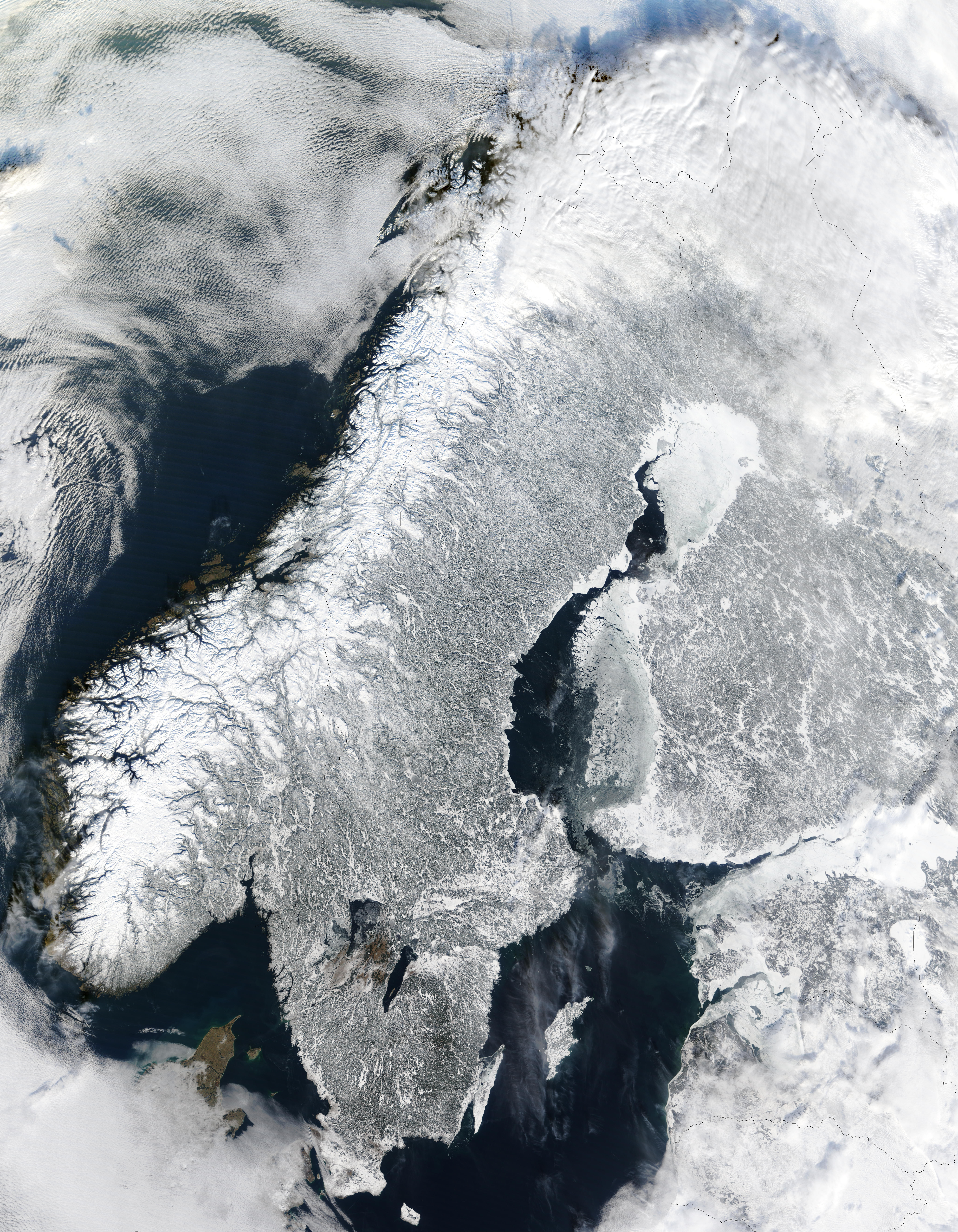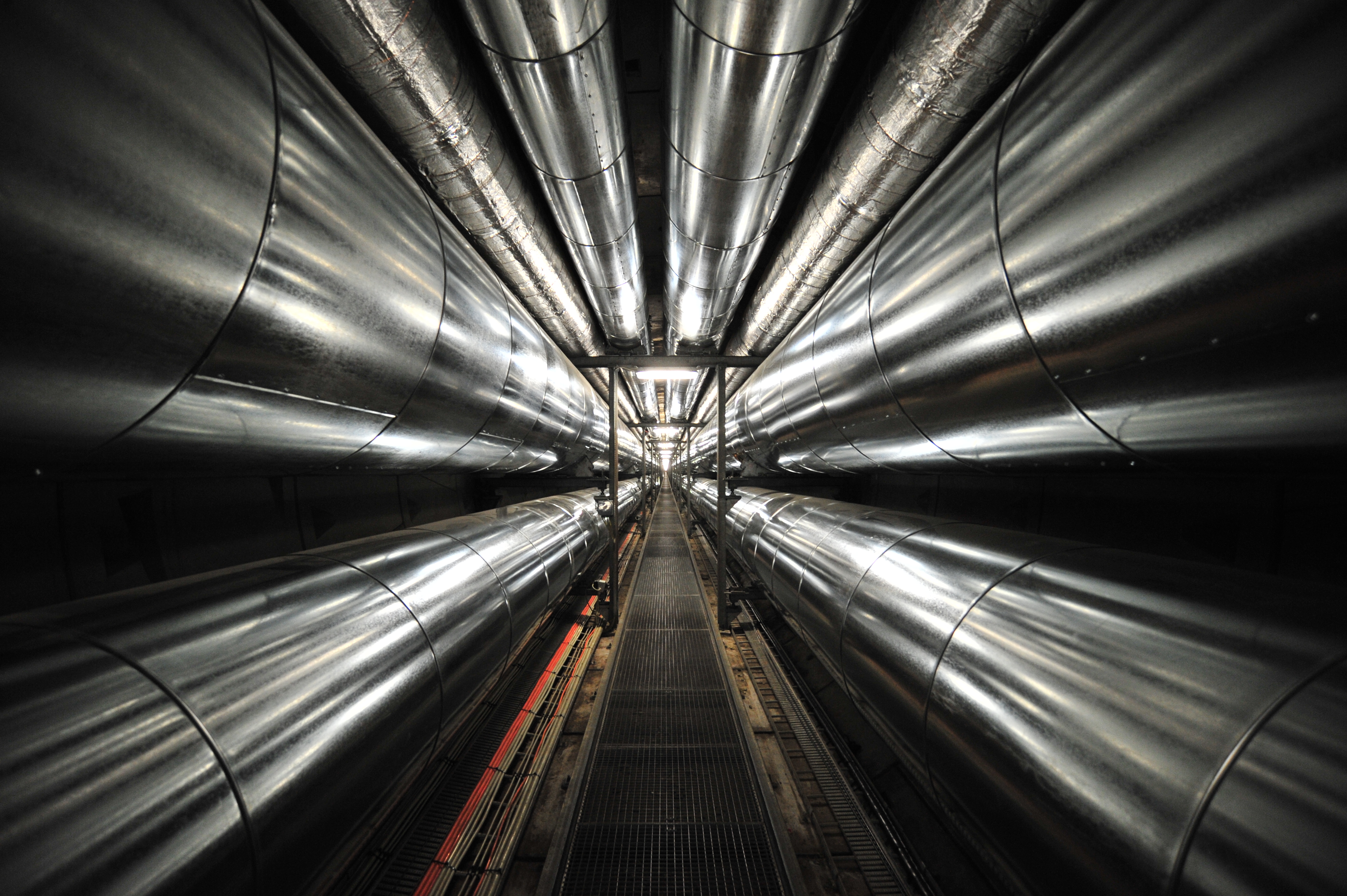|
Tröllaskagi
Tröllaskagi () is a peninsula in northern Iceland on the Greenland Sea, between the fjords of Eyjafjörður and Skagafjörður. The peninsula is mountainous, with several peaks reaching over 1,000 meters above sea level, the tallest being Kerling (1,538 m). It is the part of Iceland with the highest elevation outside the central highlands. The peninsula is cut by several deep valleys that were carved by glaciers during the glacial periods of the last Ice age and later by the rivers that now flow down those valleys. A few permanent glacial ice caps still exist in central Tröllaskagi, but they are all rather small. Human settlement is only extant in the relatively flat lowlands along the coast and in the valleys, but these lowlands are densely populated by Icelandic standards with important agricultural regions and a few towns and villages that mostly base their livelihood on fisheries. Those settlements are (clockwise around the peninsula beginning in Skagafjörður): Hofsós, ... [...More Info...] [...Related Items...] OR: [Wikipedia] [Google] [Baidu] |
Eyjafjörður
Eyjafjörður (, ''Island Fjord'') is one of the longest fjords in Iceland. It is located in the central north of the country. Situated by the fjord is the country's fourth most populous municipality, Akureyri. Physical geography The fjord is long and narrow and measures 60 km from its head to its mouth. Its greatest width is 15 km between Ólafsfjörður and Gjögurtá at the fjord's mouth, but for the greater part of its length it is mostly between 5–10 km wide. The fjord is surrounded by hills and mountains on both sides; the mountains are taller on the west side, in the mountain range of the Tröllaskagi peninsula. In the outer part of the fjord there are no lowlands along the coast as the steep hills roll directly into the sea. Further south in the fjord there are strips of lowland along both coasts; these are wider on the west side. Several valleys lead from Eyjafjörður: most of them to the west, where the two most significant are Hörgárdalur and ... [...More Info...] [...Related Items...] OR: [Wikipedia] [Google] [Baidu] |
Skagafjörður
Skagafjörður () is a deep fjord and its valley in northern Iceland. Location Skagafjörður, the fjord, is about 40 km long and 15 km wide, situated between Tröllaskagi to the east and the Skagi, Skagi Peninsula to the west. There are two municipalities in the area, Skagafjörður Municipality (approx. 4140 inhabitants) and Akrahreppur, Akrahreppur Municipality (approx. 210 inhabitants). This is one of Iceland's most prosperous agricultural regions, with widespread dairy and sheep farming in addition to the horse breeding for which the district is famed. Skagafjörður is the only county in Iceland where horses outnumber people. It is a centre for agriculture, and some fisheries are also based in the settlements of Sauðárkrókur and Hofsós. The people living in Skagafjörður have a reputation for choir singing, horsemanship, and gatherings. There are three islands in the bay: Málmey, Drangey and Lundey, Skagafjörður, Lundey (Puffin Island). The bay is l ... [...More Info...] [...Related Items...] OR: [Wikipedia] [Google] [Baidu] |
Iceland
Iceland is a Nordic countries, Nordic island country between the Atlantic Ocean, North Atlantic and Arctic Oceans, on the Mid-Atlantic Ridge between North America and Europe. It is culturally and politically linked with Europe and is the region's westernmost and most list of countries and dependencies by population density, sparsely populated country. Its Capital city, capital and largest city is Reykjavík, which is home to about 36% of the country's roughly 380,000 residents (excluding nearby towns/suburbs, which are separate municipalities). The official language of the country is Icelandic language, Icelandic. Iceland is on a rift between Plate tectonics, tectonic plates, and its geologic activity includes geysers and frequent Types of volcanic eruptions, volcanic eruptions. The interior consists of a volcanic plateau with sand and lava fields, mountains and glaciers, and many Glacial stream, glacial rivers flow to the sea through the Upland and lowland, lowlands. Iceland i ... [...More Info...] [...Related Items...] OR: [Wikipedia] [Google] [Baidu] |
Northeastern Region (Iceland)
Northeastern Region ( ) is one of the traditional eight regions of Iceland, located in the north of the island. The biggest town in the region is Akureyri Akureyri (, ) is a town in northern Iceland, the country's fifth most populous Municipalities of Iceland, municipality (under the official name of Akureyrarbær , 'town of Akureyri') and the largest outside the Capital Region (Iceland), Capital R ..., with a population of 19,542 in 2024. References External links * {{iceland-geo-stub ... [...More Info...] [...Related Items...] OR: [Wikipedia] [Google] [Baidu] |
Peninsulas Of Iceland
A peninsula is a landform that extends from a mainland and is only connected to land on one side. Peninsulas exist on each continent. The largest peninsula in the world is the Arabian Peninsula. Etymology The word ''peninsula'' derives , . The word entered English in the 16th century. Definitions A peninsula is generally defined as a piece of land surrounded on most sides by water. A peninsula may be bordered by more than one body of water, and the body of water does not have to be an ocean or a sea. A piece of land on a very tight river bend or one between two rivers is sometimes said to form a peninsula, for example in the New Barbadoes Neck in New Jersey, United States. A peninsula may be connected to the mainland via an isthmus, for example, in the Isthmus of Corinth which connects to the Peloponnese peninsula. Formation and types Peninsulas can be formed from continental drift, glacial erosion, glacial meltwater, glacial deposition, marine sediment, marine transg ... [...More Info...] [...Related Items...] OR: [Wikipedia] [Google] [Baidu] |
Tunnel
A tunnel is an underground or undersea passageway. It is dug through surrounding soil, earth or rock, or laid under water, and is usually completely enclosed except for the two portals common at each end, though there may be access and ventilation openings at various points along the length. A pipeline differs significantly from a tunnel, though some recent tunnels have used immersed tube construction techniques rather than traditional tunnel boring methods. A tunnel may be for foot or vehicular road traffic, for rail traffic, or for a canal. The central portions of a rapid transit network are usually in the tunnel. Some tunnels are used as sewers or aqueducts to supply water for consumption or for hydroelectric stations. Utility tunnels are used for routing steam, chilled water, electrical power or telecommunication cables, as well as connecting buildings for convenient passage of people and equipment.Salazar, Waneta. ''Tunnels in Civil Engineering''. Delhi, India : Wh ... [...More Info...] [...Related Items...] OR: [Wikipedia] [Google] [Baidu] |
Öxnadalsheiði
Öxnadalsheiði is a plateau (which includes a valley of the same name) in between Norðurárdalur in Skagafjörður and Öxnadalur in Eyjafjörður, Iceland. Route 1 between Skagafjörður and Akureyri Akureyri (, ) is a town in northern Iceland, the country's fifth most populous Municipalities of Iceland, municipality (under the official name of Akureyrarbær , 'town of Akureyri') and the largest outside the Capital Region (Iceland), Capital R ... goes through the plateau, which is quite snowy and used to be a difficult route to travel. Geography The road through has, at its highest point, an altitude of 540 meters above sea level and, as such, is the second-highest point on Route 1 after Möðrudalur wilderness (in the highlands of north-eastern Iceland). The plateau is narrow towards the west, in and , where the Heiðará river runs through a huge, deep gorge along the road. The river widens towards the east where the border between and counties is, along the riv ... [...More Info...] [...Related Items...] OR: [Wikipedia] [Google] [Baidu] |
Route 1 (Iceland)
Route 1 or the Ring Road ( or ) is a National road (Iceland), national road in Iceland that circles the entire country. As a major Trunk road, trunk route, it is considered to be the most important piece of transport infrastructure in Iceland as it connects the majority of towns together in the most densely populated areas of the country. Economically, it carries a large proportion of goods traffic as well as Tourism, tourist traffic. The total length of the road is , making it the longest ring road in Europe. The road was completed in 1974, coinciding with the 1,100th anniversary of Settlement of Iceland, the country's settlement when the longest bridge in Iceland, crossing the Skeiðará river in the southeast, was opened. Previously, vehicles intending to travel between southern settlements, e.g. Vík to Höfn, had to travel north of the country through Akureyri, making the opening a major transport improvement to the country. Many popular tourist attractions in Iceland, su ... [...More Info...] [...Related Items...] OR: [Wikipedia] [Google] [Baidu] |
Akureyri
Akureyri (, ) is a town in northern Iceland, the country's fifth most populous Municipalities of Iceland, municipality (under the official name of Akureyrarbær , 'town of Akureyri') and the largest outside the Capital Region (Iceland), Capital Region. The municipality includes the town's neighbourhood at the head of Eyjafjörður and two farther islands: Hrísey at the mouth of Eyjafjörður and Grímsey off the coast. Nicknamed the "Capital of North Iceland", Akureyri is an important port and fishing centre. The area where Akureyri is located was settled in the 9th century, but did not receive a municipal charter until 1786. Allies of World War II, Allied units were based in the town during World War II. Further growth occurred after the war as the Icelandic population increasingly moved to urban areas. The area has a relatively mild climate because of geographical factors, and the town's ice-free harbour has played a significant role in its history. History The Norsemen, ... [...More Info...] [...Related Items...] OR: [Wikipedia] [Google] [Baidu] |
Hrafnagil
Hrafnagil (, also known as Hrafnagilshverfi and formerly Reykárhverfi ) is a small village in Eyjafjarðarsveit, northern Iceland, which in 2016 had 260 inhabitants. The village has a school and a community center. The area has access to high-temperature geothermal heat, which is used to heat houses and greenhouse A greenhouse is a structure that is designed to regulate the temperature and humidity of the environment inside. There are different types of greenhouses, but they all have large areas covered with transparent materials that let sunlight pass an ...s. References Populated places in Northeastern Region (Iceland) Eyjafjörður {{Iceland-geo-stub ... [...More Info...] [...Related Items...] OR: [Wikipedia] [Google] [Baidu] |
Hjalteyri
Hjalteyri () is a tiny fishing village in northern Iceland in the Norðurland eystra region. Hjalteyri has 43 inhabitants and was the largest settlement in the former municipality of Arnarneshreppur before it merged to become part of Hörgársveit. Hjalteyri is on the west bank of the Eyjafjörður fjord and is one of the major fishing ports in the region. The company Fiskey originally started operations in Hjalteyri. Hjalteyri is well known because of the large herring meal and oil processing factory that the company Kveldúlfur h.f. built there in 1937. The factory was the largest herring processing factory of its kind in Iceland at this time. Morgunblaðið 1. September 1937. The factory was operated until 1966 or for 29 years. [...More Info...] [...Related Items...] OR: [Wikipedia] [Google] [Baidu] |




